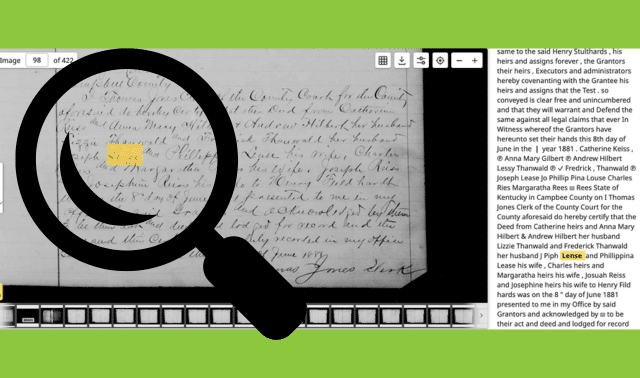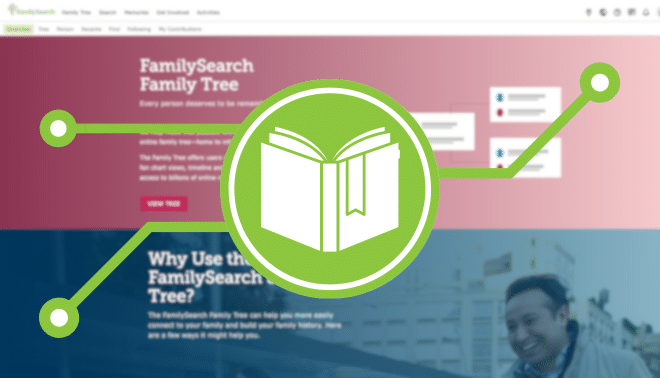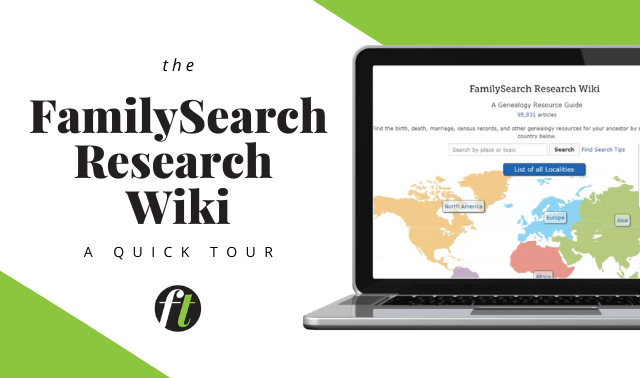Sign up for the Family Tree Newsletter Plus, you’ll receive our 10 Essential Genealogy Research Forms PDF as a special thank you!
Get Your Free Genealogy Forms
"*" indicates required fields
FamilySearch.org keeps adding new record collections, but an old standby—the International Genealogical Index (IGI)—remains one of the site’s most useful resources. The IGI contains more than 669 million family history records from two sources. “Community Contributed” records are submitted by researchers; they provide clues but contain many errors. “Community Indexed” records, mostly births and marriages copied from church registers around the world, serve as an index to reliable primary sources.
The Records search form on the FamilySearch.org home page covers many databases at once, including the IGI’s Community Indexed records. The IGI page lets you search either Community Indexed records or Community Contributed records.
You can narrow your IGI search to a specific place, such as a town, county, state or country. For example, to search the IGI for births and christenings of the Pennington family of Culmstock, Devonshire, England, you’d Enter Pennington as the Last Name, select Birth from Life Events and enter Culmstock in the Birthplace box. Check the box to match the birthplace exactly and click the Search button. The results include 30 matches in Community Indexed Records, but they’re incomplete.
Fortunately, there’s a way to focus your IGI search on a town or even a church and get comprehensive results. Records from the same source, such as a church’s christening or marriage records, get a batch number that you can search on. Here’s how to identify the batch number for the place where your ancestor lived.
Using IGI results to find a batch number
I started my search for an immigrant ancestor, James Pennington, by searching for matches born in the right time period. Then I used the most promising matching record to do a batch number search for other likely relatives born in the same town.
1. Search the IGI for James Pennington, born in England between 1750 and 1760. Click on Match All Exactly and hit the Search button.
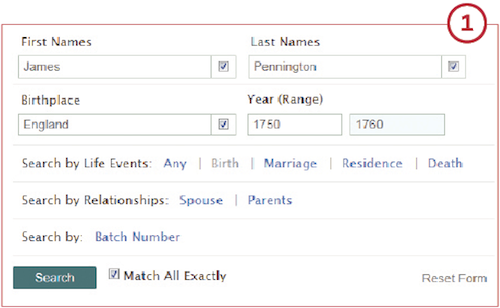
2. The second match, with parents William and Elizabeth, looks promising. Optionally, click on the down arrow to preview the record. Click on the name in blue to view the full record.
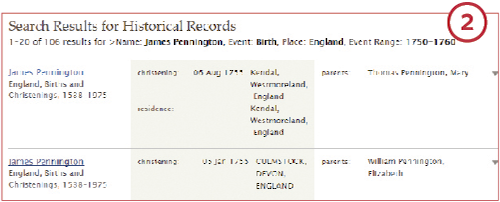
3. Click on the indexing project (batch) number. In this case, it’s C05076-1.
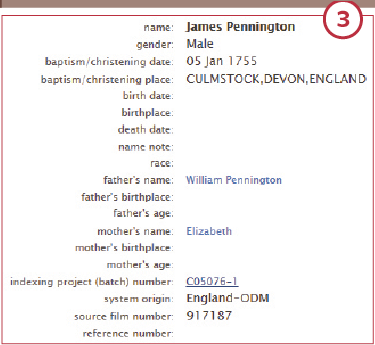
4. Enter Pennington as the Last Name and hit the Search button.
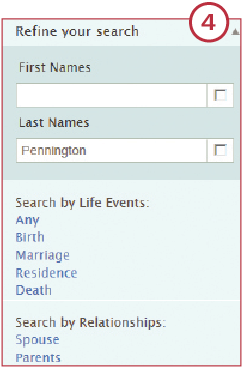
5. View the 59 matches. The results show everyone with the last name Pennington whose record of birth or christening was extracted from the parish church records of Culmstock. Click on the down arrows to see a preview. Click on a name in blue to see more details.
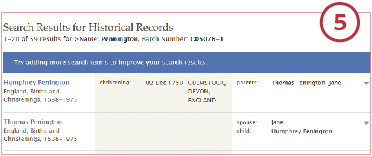
Using Hugh Wallis’ website to find a batch number
For a more direct way to find a batch number, try Hugh Wallis’ website <free pages.genealogy.rootsweb.ancestry.com/~hughwallis/IGIBatchNumbers.htm>, which lists IGI batch numbers for the British Isles and North America.
1. Scroll down and select a country, state or county. Click on the batch number for a town. The batch number for births and christenings from 1608 to 1837 in the parish of Culmstock, Devonshire, England is C050761.

2. The IGI search form is already filled in with the batch number you need. Type in just a surname to run a broad search of the family. Add a first name to find a specific person. Then click the Submit button and view your matches.
You also can use the FamilySearch online catalog to find a batch number: On FamilySearch.org, select Catalog, do a place-names search on Culmstock and look for the subject heading Church Records—Indexes. You’ll see matches for christenings and marriages. Notes in these catalog records cite C-5076-1 for the christenings and M50761 for the marriages. To convert these numbers into batch numbers, insert a zero before the number so you have six digits: C50761 becomes C050761 and M50761 becomes M050761.
You also can use the FamilySearch online catalog to find a batch number: On FamilySearch.org, select Catalog, do a place-names search on Culmstock and look for the subject heading Church Records—Indexes. You’ll see matches for christenings and marriages. Notes in these catalog records cite C-5076-1 for the christenings and M50761 for the marriages. To convert these numbers into batch numbers, insert a zero before the number so you have six digits: C50761 becomes C050761 and M50761 becomes M050761.

Refer to the website IGI Batch Numbers: World Wide Links and How to use Them <nycnuts.net/batchlinks> to find more links to IGI batch number listings for the United States and several other countries.
From the December 2012 issue of Family Tree Magazine
ADVERTISEMENT

